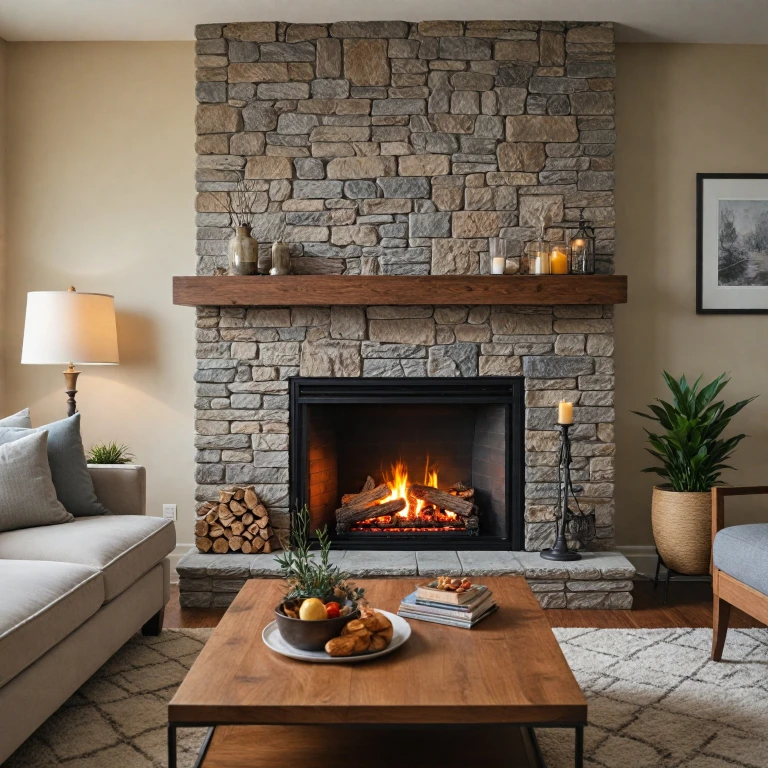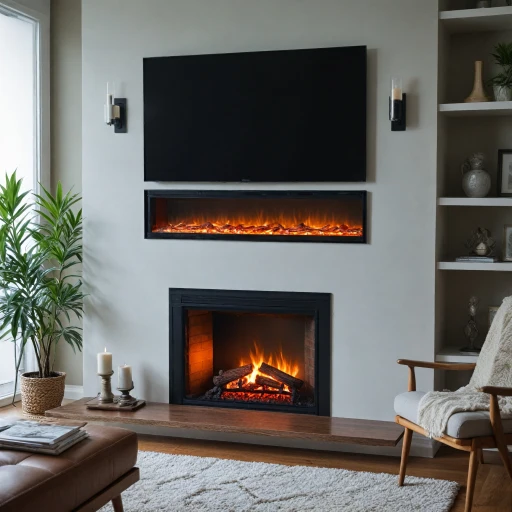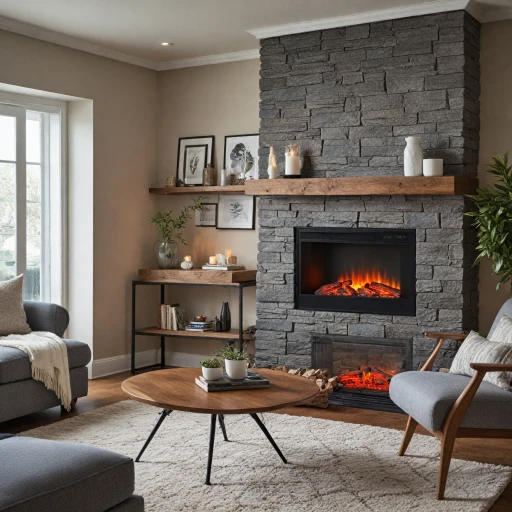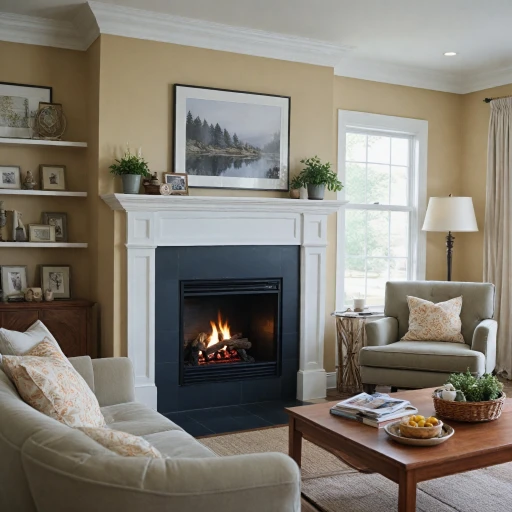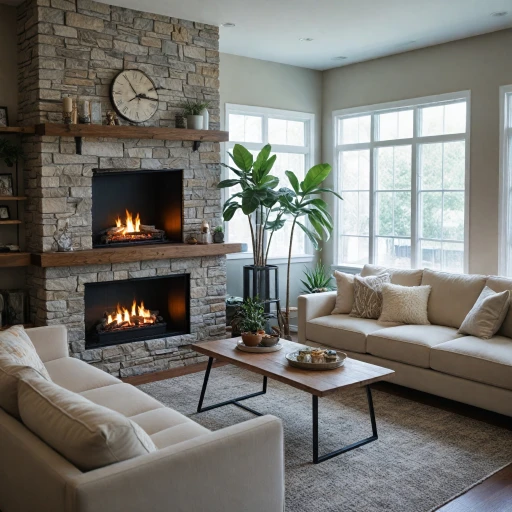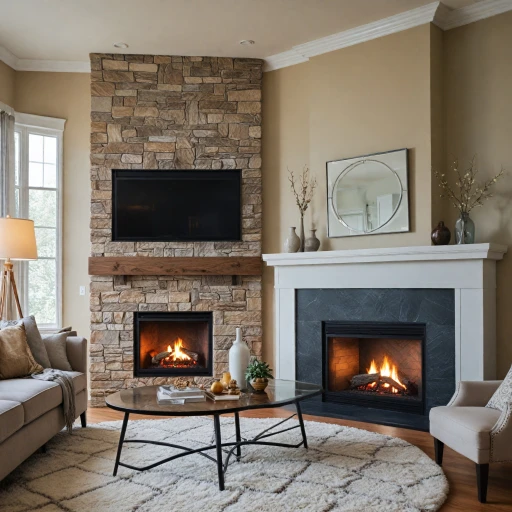
Understanding the Basics of Gas and Electric Fireplaces
Getting to Know Your Fireplace Options
When it comes to choosing between gas and electric fireplaces, it's important to understand what each type offers. Both options provide warmth and ambiance, but they do so in different ways. Let's break down the basics to help you make an informed decision.
Gas Fireplaces: Traditional Warmth
Gas fireplaces are popular for their ability to produce a real flame, offering a traditional feel similar to wood-burning fireplaces. They typically use natural gas or propane to generate heat, making them a strong contender for those who appreciate the charm of a flickering fire. However, they require a gas line installation, which can add to the initial cost.
Electric Fireplaces: Modern Convenience
On the other hand, electric fireplaces are all about convenience and ease of use. They don't require a chimney or venting, making installation a breeze. Simply plug them into an electrical outlet, and you're good to go. Electric fireplaces are also energy efficient, converting almost all the electricity they use into heat, which can be a cost-effective option in the long run.
Choosing the Right Fit for Your Home
Deciding between gas and electric fireplaces depends on your priorities. If you value the authenticity of a real flame and don't mind the extra installation effort, a gas fireplace might be your best bet. However, if you prefer a hassle-free setup and lower maintenance, an electric fireplace could be the way to go. Consider your home's layout, your budget, and how much effort you're willing to put into maintenance to make the best choice for your living space.
Cost Considerations: Initial Investment and Long-term Expenses
Evaluating the Financial Commitment and Long-Term Costs
When setting up a cozy environment with a fireplace, it's essential to consider the financial commitment involved, both initially and afterward. Buying and installing a fireplace is not just a purchase; it’s an investment into the warmth and ambiance of your home. Many people are drawn to the timeless appeal of a gas fireplace. For some, that genuine wood burning fire experience is the best part of their winter evening. However, these setups come with a heftier price tag. From installation costs to the ongoing expense of natural gas, you'll need to ponder if they're worth the splurge. On the flip side, electric fireplaces present a more wallet-friendly option. They generally come with lower installation costs since they don’t require a chimney or venting. Plus, they offer a wide range of styles and sizes that fit every room. Moreover, without the need for wood or gas, the annual expense is reduced, especially with energy-efficient models keeping the heat electric and effective. Also worth mentioning is the maintenance aspect. While gas fireplaces require regular upkeep to ensure the chimney and gas lines are working properly, electric versions boast minimal maintenance costs. Merely changing a couple of light bulbs now and then keeps the flame effects flickering beautifully. And if you're thinking of switching from a gas setting, you can explore how to transition from a gas fireplace to an electric one before making that decision. Choosing between these heating solutions involves weighing the costs with the importance you place on authentic fire experience. Both gas and electric options have their merits, but understanding the financial components involved can steer you toward the right choice. It’s all about finding that balance between what your budget allows and the cozy warmth that a fireplace will add to your living space.Efficiency and Environmental Impact
Energy Efficiency and Environmental Impact
When it comes to energy efficiency, electric fireplaces often take the lead. They convert nearly all the electricity they use into heat, making them highly energy efficient. This means that if you're looking to heat a specific room without wasting energy, an electric fireplace might be your best bet.
Gas fireplaces, on the other hand, use natural gas or propane. While they can provide a substantial amount of heat, some energy is lost through the venting process. This can be a consideration if you're trying to minimize energy costs over time. However, gas fireplaces can still be a good option if you prefer the ambiance of a real flame and are willing to invest in efficient models.
Environmental Considerations
From an environmental standpoint, electric fireplaces are generally more eco-friendly. They don't produce emissions or require burning fossil fuels directly in your home. This can be a significant advantage if you're conscious about your carbon footprint.
Gas fireplaces do emit some greenhouse gases, although they are cleaner than traditional wood-burning fireplaces. If you're considering the environmental impact, it's worth noting that the type of fuel and the efficiency of the fireplace will influence its overall footprint.
Heat Output and Room Heating
In terms of heat output, gas fireplaces can often heat larger spaces more effectively than electric models. They can be a good choice for open-plan areas or homes in colder climates. However, if your goal is to heat a smaller room or provide supplemental heating, an electric fireplace will do the job efficiently without the need for extensive installation.
Ultimately, the choice between gas and electric fireplaces will depend on your specific needs, preferences, and environmental considerations. Both options have their advantages, so it's important to weigh them carefully.
Aesthetic and Design Options
Visual Appeal of Modern Fireplaces
When it comes to styling up your home, fireplaces can steal the show as a centerpiece. Whether you've got your heart set on a cozy electric fireplace or a traditional gas fireplace, aesthetics play a crucial role in making that choice.Aesthetic Flexibility
Electric fireplaces offer an impressive range of design options. You can find them in sleek modern styles, rustic stone finishes, or even those that mimic the charm of a wood-burning fireplace. Their versatility allows them to fit seamlessly into various room settings, giving you the creative freedom to match the fireplace perfectly with your existing décor. On the other hand, gas fireplaces provide a more classic look. Many models are designed to give the ambiance of a natural gas or wood burning, with realistic flame effects that can be quite mesmerizing.Customization and Design Options
- Mantel Choices: Electric fireplaces often come with customizable mantels. Choose from different materials and finishes to suit your style.
- Fireplace Inserts: Both types offer inserts that can enhance the look of an existing fireplace while providing better heating efficiency.
- Variety of Flames: Electric fireplaces allow for adjustments in flame color, intensity, and even speed. This can infuse a room with any mood you desire.
